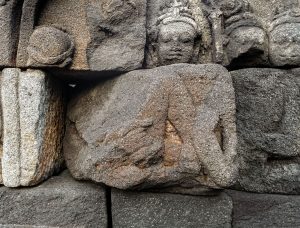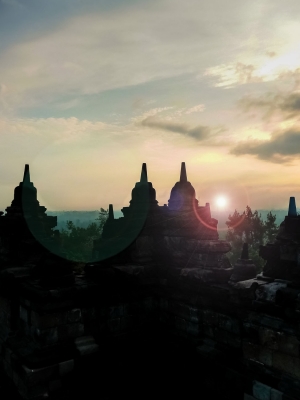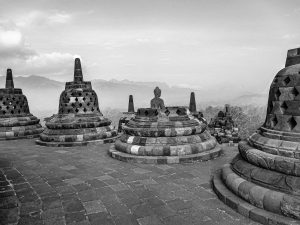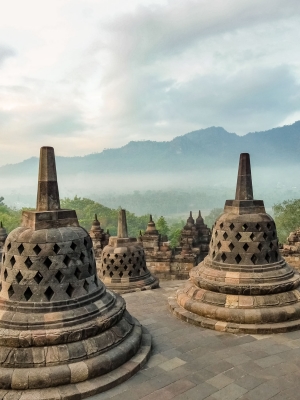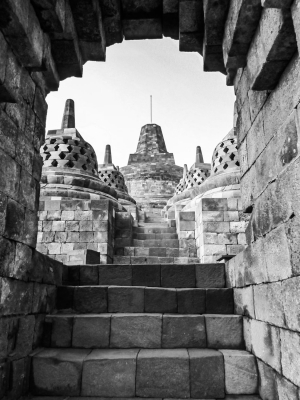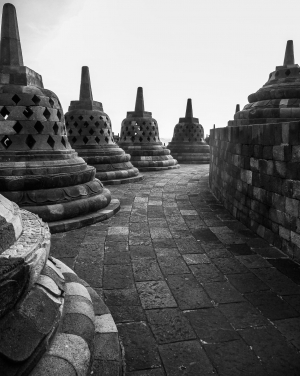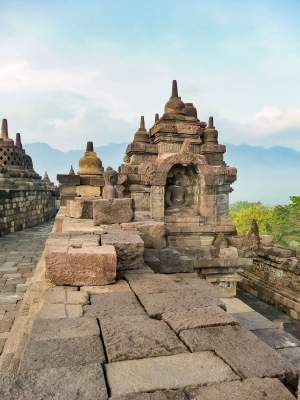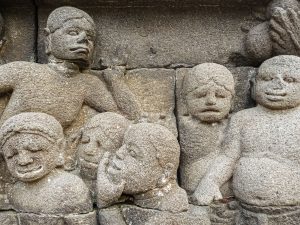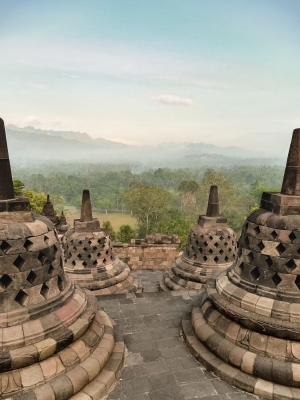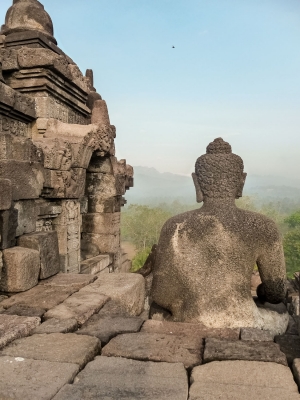Borobudur
A Buddhist believes the closer you are to the sky, the closer you are to the Gods. Upon climbing the steps of Borobudur, as the surrounding jungle reveals itself, it's easy to understand how the creators of this masterpiece felt more connected to the divine than the earthly.
Believed to have been built between 778 and 850 BCE by the Sailendra dynasty, Borobudur is the largest Buddhist Temple on Earth. It has nine stacked platforms; six square, three circular and is topped with a central dome. 504 Buddhist statues and 2,672 relief panels adorn the structure.
The design of this Mahayana Buddhist temple follows the typical trend of Javanese Buddhist architecture. Blending the Indonesian indigenous cult of ancestor worship with the Buddhist concept of attaining Nirvana.
Found in the central region of Java, Indonesia's most populous island, Borobudur was a place of pilgrimage for over 500 years. The increasing popularity of Islam in the region meant a general decline of Hindu Kingdoms. Consequently, Borobudur was abandoned and the site lay hidden under layers of volcanic ash and jungle growth for a further 500 years.
Then, In 1814, tipped off by locals, the English lieutenant governor of Java, Thomas Stamford Raffles would re-discover the site and bring the world's attention.
The Restoration of Borobudur
In 1907 a Dutch team of archaeologists set to restoring the site. Over one million stones were dismantled and removed During the process. Set aside like pieces of a giant jigsaw puzzle in order to be catalogued and cleaned. Upon treatment for preservation, they were then re-integrated back into the complex.
Borobudur became a testing ground for new conservation techniques. In particular new procedures to battle the microorganisms attacking the stone.
In 1991, UNESCO listed Borobudur as a World Heritage Site. Listed under Cultural criteria:
- Represent a masterpiece of human creative genius
- Exhibit an important interchange of human values, over a length of time or within a cultural area of the world, on developments in architecture or technology, monumental arts, town-planning or landscape design
- To be directly or tangibly associated with events or living traditions, with ideas, or with beliefs, with artistic and literary works of outstanding universal significance
Photographing Borobudur
It's the most popular historical tourist attraction in Indonesia. With this in mind, you'll need to make the most of your time at the temple.
As is the norm with mass tourism, there are the inevitable sunrise crowds. However, depending on the season it doesn't have to be the cattle market that springs to mind. Afterall first light is undoubtedly a magical time for such a setting.
I was there in late August which coincided with the quietest period at the site (June-August). At this time of year the humidity is lower and the air visibility clearer, giving you the best chance of some magical shots. Thrown in for good measure will be bonus views of Mount Merapi. Visit on a weekday to avoid any potential crowds.
Furthermore, the temple complex is big enough to find some quiet corners. Take your time and spend at least a few hours here. Explore the nooks and crannies and you're sure to get some cracking shots.
Completely Useless Facts about Borobudur
- The complex encompasses over 15000 square metres
- On the top floor of the temple sits the largest stupa which also serves as a sundial
- In 1985, a bomb blast by the blind Muslim preacher, Husein Ali Al Habsyi caused extensive damage to nine of the stupas. Fortunately, there were no human casualties
Have a wemooch elsewhere...
Inspired?
Fancy a wee mooch around all that history and mystery at Borobudur?
You'll need a few things to come together for it all to work out. There's some useful stuff to be clicked and pressed below.
